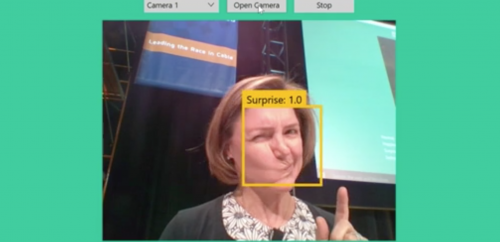You might remember when last year your Facebook newsfeed was flooded by people posting their results from a “guess my age” tool Microsoft unveiled. Microsoft was showing off machine learning, meaning technology that allows a computer to identify trends and make predictions based on aggregate data. The point was to give an example to developers about the wide range of applications machine learning can have.
Microsoft’s Sara Spalding stopped by INTX’s Imagine Park today to talk about how machine learning can innovate and potentially disrupt the user experience game.
Facial and visual recognition has made huge strides beyond guessing age. Spalding explained that they’ve developed a tool that allows video to be automatically analyzed for details like “indoors,” “old woman sitting,” “Grace Kelly,” or “purple sweater.”
The implication is huge. Not just for search ability for specific scenes, but for better personalized recommendations based on details more nuanced than just genre or actor. It also empowers content creators to better tailor shows and movies to audiences. Netflix used analysis of viewer habits to develop House of Cards with incredible success. Imagine what can be produced with even richer data. All this in a marketplace defined by competition driving quality higher and higher.
Spalding also did a live demonstration of emotional recognition software by turning the camera on herself. Changing her expression, the computer was able to assign “happy” or, “surprised” immediately. Again, the implications are endless. Spalding herself highlighted the benefit of such technology on focus groups. Researchers would have the benefit of not only reading emotional reactions but to automatically connect that data with demographic information also captured by the software such as age, race, and gender.
We saw similar thinking earlier this week in Imagine Park from MIT Media Labs project indexing live news broadcasts using automatic video recognition software.
Programming’s disruption is far from over we’ve learned this week at INTX. And that’s a good thing. The future of video is just beginning, and audiences, creators, designers, and entrepreneurs alike will reap the rewards.
